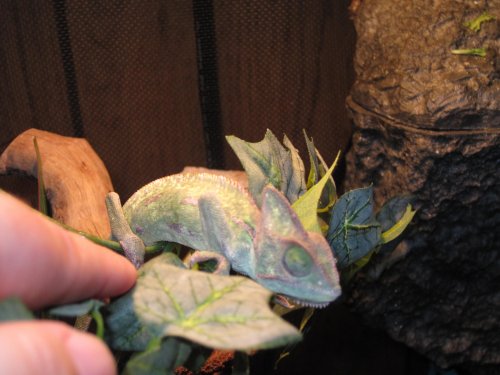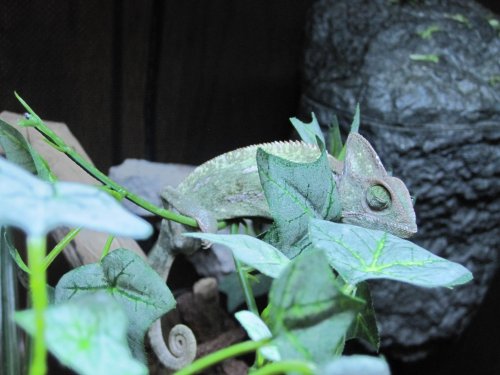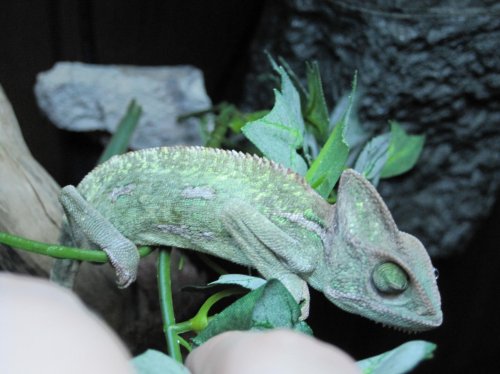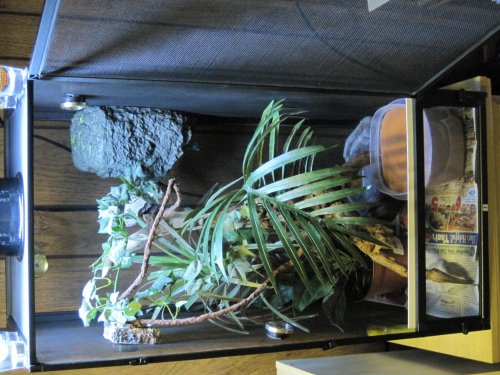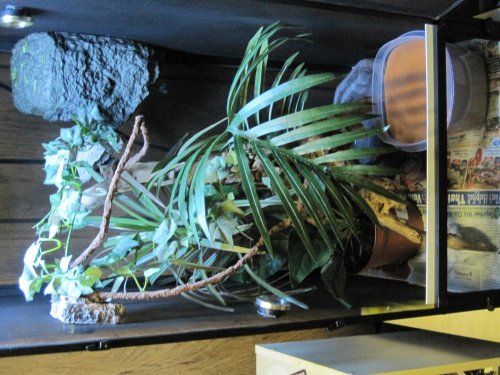pdartt1978
New Member
I'm worried about my veiled chameleon. I bought her from a local pet store in early-mid April and was told she was about 4 months old so she's about 6 months now. I'm pretty pissed at the petstore because I've been getting different information from different employees about what I should be doing. She sleeps pretty much all day and night. Doesn't seem to be eating much, maybe a couple crickets a day. I dust them with a calcium supplement too. She is still defacating so I know she is eating. I change the water twice a day but never see her actually drink. I use a drip system that I got at the pet store. I handle her once every other day, which I was told by the pet store was okay. I have a day light and night light. I was never told anything about the thermometer so I'm not sure what the temp in her cage is. Pet store is closed right now so can't get one until tomorrow. He cage is mesh screen and about 2-3 feet high which was recomended by pet store that sold her to me. I mist the plants in her cage 2-3 times per day. She pretty much sleeps all the time and I'm not not sure if this is normal? Can someone please offer some advice? I want to make sure I'm taking care of her properly and I want her to be healthy. Thank you!!





